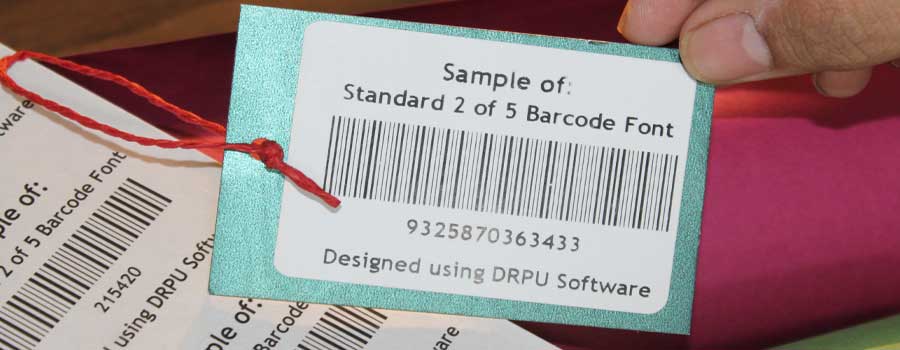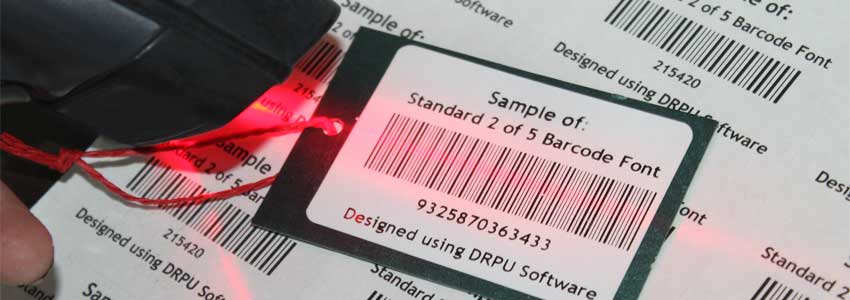Standard 2 of 5, also known as Industrial 2 of 5 or Code 25, is a numeric-only barcode format that consists of alternating wide and narrow bars. Each character is represented by five bars, with a start and stop character at each end of the barcode. In this article, we will explore the characters that can be encoded in a Standard 2 of 5 barcode.

-
Character Set
Standard 2 of 5 barcode is limited to encoding numeric characters only. The character set includes the digits 0 through 9, with no provision for encoding letters or special characters. This limitation makes Standard 2 of 5 barcode suitable for applications where only numeric data needs to be encoded, such as inventory management systems or product labelling.
-
Encoding Method
Each character in a Standard 2 of 5 barcode is represented by five bars, with two bars wide and three bars narrow. The bars are arranged in pairs, with the first pair representing the first digit of the character and the second pair representing the second digit. The fifth bar is a narrow space, which separates each character in the barcode.
-
Start and Stop Characters
Standard 2 of 5 barcode includes start and stop characters at each end of the barcode. The start character is typically represented by two wide bars, followed by two narrow bars, and the stop character is represented by two narrow bars, followed by two wide bars. The start and stop characters serve as markers for the beginning and end of the barcode, and help to ensure that the barcode is read correctly.
-
Data Capacity
The data capacity of a Standard 2 of 5 barcode is limited by the number of characters that can be encoded in the barcode. Each character requires five bars, with two additional bars for the start and stop characters. Therefore, the maximum number of characters that can be encoded in a Standard 2 of 5 barcode is determined by the number of bars that can be reliably printed and read.
↠In general, Standard 2 of 5 barcode has a maximum capacity of 14 numeric characters, which results in a barcode that is 34 bars wide (including the start and stop characters). However, some barcode readers and printers may have limitations on the maximum width of a barcode that they can read or print.
-
Considerations
When selecting a barcode format for a particular application, it is important to consider the type of data that needs to be encoded. Standard 2 of 5 barcode is suitable for applications where only numeric data needs to be encoded, such as inventory management systems or product labelling.
↠However, if alphanumeric or special characters need to be encoded, other barcode formats such as Code 128 or QR codes may be more appropriate. Code 128 barcode can encode both numeric and alphanumeric characters, while QR codes can store up to several hundred characters in a compact 2D format.
In conclusion, Standard 2 of 5 barcode can encode numeric characters only, with a maximum capacity of 14 characters. The barcode format is suitable for applications where only numeric data needs to be encoded, and consideration should be given to other barcode formats for applications with more complex data requirements.
Advantages of Standard 2 of 5 Barcode
Standard 2 of 5 barcode, also known as Industrial 2 of 5 or Code 25, is a numeric-only barcode format that consists of alternating wide and narrow bars. It is widely used in a variety of applications, from inventory management systems to product labelling and document tracking. In this article, we will explore the advantages of using Standard 2 of 5 barcode.
-
Compact Size: Standard 2 of 5 barcode is a compact barcode format that requires less space than other barcode formats. This makes it well-suited to applications where space is limited, such as product labeling or packaging.
-
Easy to Read: Standard 2 of 5 barcode is easy to read and can be scanned accurately. This makes it a popular choice for high-volume scanning applications, such as inventory management, product identification, or document tracking.
-
Numeric-Only Encoding: Standard 2 of 5 barcode encodes only numeric data, which makes it well-suited to applications where only numeric data needs to be encoded. This can help to simplify the encoding process and minimize the risk of errors.
-
Cost-Effective: Standard 2 of 5 barcode is a cost-effective barcode format that can be printed using standard equipment, such as a laser or inkjet printer. This makes it a popular choice for small businesses or organizations with limited resources.
-
Compatibility with Legacy Systems: Standard 2 of 5 barcode is a widely-used barcode format that is compatible with many legacy systems. This makes it a popular choice for organizations that have already invested in barcode scanning equipment or software.
-
Wide Range of Applications: Standard 2 of 5 barcode is used in a wide range of applications, from inventory management systems to product labelling and document tracking. This versatility makes it a popular choice for businesses and organizations of all sizes.
-
High Data Density: Standard 2 of 5 barcode can encode a large amount of data in a compact format. This can help to minimize the amount of space required for barcode labels or tags, and can help to simplify the tracking and management of large amounts of data.
-
Robustness: Standard 2 of 5 barcode is a robust barcode format that can withstand a wide range of environmental conditions. It can be used in harsh environments, such as industrial or manufacturing settings, without compromising its readability or accuracy.
-
Ease of Printing: Standard 2 of 5 barcode can be printed easily using a variety of printing methods, including laser printers, inkjet printers, direct thermal printers, and thermal transfer printers. This makes it a popular choice for businesses and organizations that need to print large volumes of barcode labels or tags.
-
Easy Integration with Software Systems: Standard 2 of 5 barcode can be easily integrated with software systems, such as inventory management and document tracking software. This can help to streamline data collection as well as management, and improve the accuracy and efficiency of various business processes.
In conclusion, Standard 2 of 5 barcode is a widely-used barcode format that offers a range of advantages, including its compact size, easy readability, numeric-only encoding, cost-effectiveness, compatibility with legacy systems, wide range of applications, high data density, ease of printing, robustness, and ease of integration with software systems. These advantages make it a popular choice for businesses and organizations of all sizes and types.
